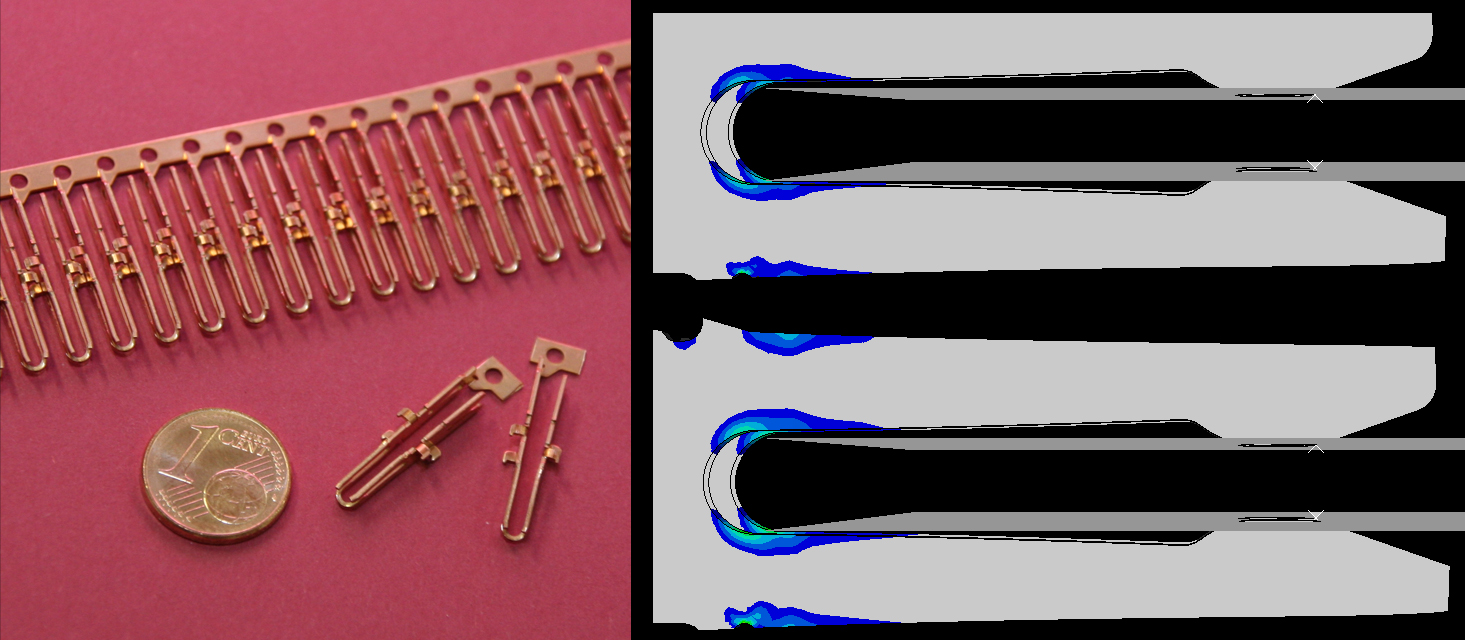Award worthy: Innovative modelling approach for efficiently designed copper connectors
(November 18, 2015) Manufacturers of copper connectors and other copper parts can now develop their products less expensively, more reliably and with a more durable design than was previously possible. This is made possible via a new material model for process and component simulation, which was developed by scientists at the Fraunhofer Institute for Mechanics of Materials IWM in cooperation with the Research Institute for Precious Metals and Metal Chemistry (fem) and which was awarded the “Innovationspreis 2015” (Innovation prize 2015) from the German Copper Institute (DKI).

On November 5, 2015 at the 12th annual Copper Symposium in Berlin, the prize for outstanding research in the fields of copper and copper alloys was bestowed upon Dr. Matthias Weber, Dr. Johannes Preußner and Dr. Dirk Helm from the Fraunhofer IWM as well as Miriam Eisenbart, Karin Pfeffer and Dr. Ulrich Klotz from the research institute fem.
The increased use of electric drives and electronics in the automobile industry results in dramatic increases in installed electric connectors in various design configurations, which must continually be built to smaller sizes and narrower specifications. Simultaneously, higher operating temperatures, the demand for greater current carrying capacity and the ability to handle higher mechanical loads challenge reliability and life expectancy of these components and require shorter development times. The need to solve these problems has led to a rapid acceleration in economic significance for the computer-aided design and optimization of copper components.
A proven approach, new to the copper industry
“We’re making a material model available, with which the complex behavior of copper components can be more precisely predicted” explains Dr. Matthias Weber, from the Fraunhofer IWM about the results of the project. “The priority was to describe the relaxation behavior of copper as exactly as possible – so as to predict how copper components would perform in time and temperature dependent loading”. During use the clamping force gradually decreases due to relaxation processes and the contact resistance of a connector increases. This results in the failure of the component. As a general rule, the smaller the component, the sooner the failure threshold is reached. Using the newly developed model, manufacturers of precipitation hardened copper components can now numerically predict the expected lifetime and thereby save time and money which would otherwise be required for experimental failure analyses. The modelling and simulation of the connectors also makes it possible to better estimate additional functionalities during use and to realize the optimal design of the component. Since the new material model includes a description to forecast the precipitate evolution of specific alloys, it can also predict the mechanical properties of the resulting components before they are manufactured. It can therefore also be utilized to optimize the forming processes during manufacturing like the crimping of electrical contacts or the compensation of spring-back effects during bending.
More exact material data for the design of copper components
Employing experimental testing procedures, the scientsts characterized precipitation-hardened copper-nickel-silicon (CuNiSi) alloys, developed an appropriate mechanism-based material model and correctly simulated the behavior of the connectors for temperatures up to 150 °C and longer relaxation times. This allowed new and higher quality predictions of temperature and time dependent behavior of the clamping force as well as the plastic yield strength of the copper components.
Contact
Dr. Matthias Weber
Phone +49 761 5142-272
Send E-mail
 Fraunhofer Institute for Mechanics of Materials IWM
Fraunhofer Institute for Mechanics of Materials IWM